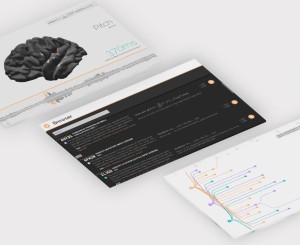 The Kymata Atlas, a joint enterprise between the MRC-CBSU and Cambridge University, has now entered beta testing. The online atlas is a repository of neural models, allowing anyone in the world to browse neuroimaging results generated using an analysis pipeline developed at the Unit (Thwaites et al. 2015).
The Kymata Atlas, a joint enterprise between the MRC-CBSU and Cambridge University, has now entered beta testing. The online atlas is a repository of neural models, allowing anyone in the world to browse neuroimaging results generated using an analysis pipeline developed at the Unit (Thwaites et al. 2015).
The atlas allows the user to search for aspects of brain function (like ‘loudness’ or ‘position’) and the atlas will, in turn, show the user where this information is processed in the cortex, in interactive 3D. Although there are only twenty such aspects currently available to the public, this will grow as the database is expanded.
Dr Andrew Thwaites, leading the development of the atlas, said: ‘We are fortunate at the CBSU to have both the most advanced imaging equipment in the world, and the necessary High Performance Computing power needed to analyse the data acquired with this equipment. It is hoped that sharing our findings in their entirety online will allow researchers to check our results in an open and transparent way’.
The data was collected at the CBSU’s magnetoencephalography (MEG) laboratory, with additional structurals obtained with the onsite MRI scanner. The +7000GB of data used to test the findings in the atlas was crunched on the CBSU’s High Performance Computing cluster.
This work was supported by an EPSRC grant, an ERC Advanced Grant and by MRC Cognition and Brain Sciences Unit funding to William Marslen-Wilson, former Director of the Unit.
Website
Refs:
Thwaites, Nimmo-Smith, Fonteneau, Patterson, Buttery, Marslen-Wilson ’Tracking cortical entrainment in neural activity: Auditory processes in human temporal cortex’ Frontiers in Computational Neuroscience 9:5 (2015) doi:10.3389/fncom.2015.00005

 MRC Cognition and Brain Sciences Unit
MRC Cognition and Brain Sciences Unit


